In the fall of 2020, I decided to take on a unique goal: lifting the Dinnie Stones in Scotland. Having watched STONELAND multiple times and seeing John Odden, StrongFirst Certified Elite Instructor, and Jason Marshall, StrongFirst Certified Master Instructor, lifting the “Steens” aroused the urge to achieve this great feat. Little did I know that this decision would actually result in me standing in front of these relics of strength two years later.
“Strong people and tests of strength exist everywhere throughout the world.”—Inaqui Perurena, LEVANTADORES
The practice of lifting stones can be found in almost every country in the world—from Britain, Scandinavia, the Basque Country, Japan, to the islands of French Polynesia. In each place, there exists a rich history and tradition around them.
The Scottish clans used “Stones of Strength” (the “Clach-neart” as they are called in Gaelic) not only to demonstrate strength or prove a man’s usefulness for combat and (hard) physical work but also as a ritual. This test of strength was a rite of passage that opened the path for a boy to become a man and establish his position in the clan, based on his physical capability. It was an important aspect of their culture not only for the individual but also for the clan as a whole.
Starting with Donald Dinnie himself and continued by people like David Webster, Martin Jancsics, and Brett Nicol, many fight to revive the ancient culture of stone lifting in Scotland, which has started to slip away over the centuries. The Dinnie Stones are historic symbols of strength and a testament to the strength of those who came before us. By lifting these stones, we honor the achievements of these “great men of character with the strength to match”—not only adding to this rich history but becoming part of it ourselves.1
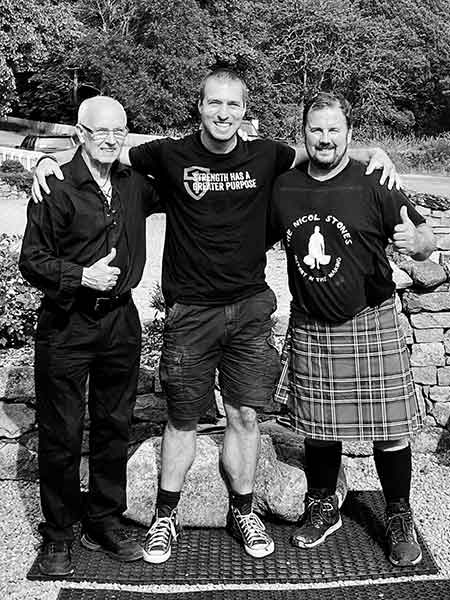
German philosopher, Friedrich Nietzsche wrote that the “Will to Power” is the driving force of all humans. I believe this can also be described as the “will to strength.” In essence, “the will to strength” constitutes an inner driving force (almost an instinct) in humans to grow, get stronger, and become something more than we currently are. It’s what drives us to continually face and overcome obstacles both external and internal. It moves us to do difficult, yet worthwhile, things and leave our mark on the world.
After almost two years of training and preparation, I successfully lifted the Dinnie Stones on July 19th, 2022 in Potarch, Scotland, becoming the 204th person to do so. Thereby, not only adding my own little paragraph to their history but also passing on the “will to strength” a little further. Let me tell you about my experiences along the way and the lessons I learned.
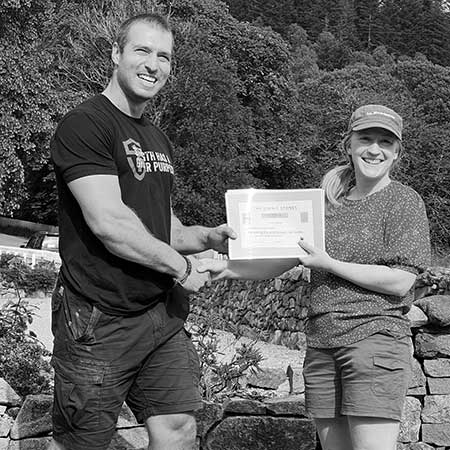
Honor the Process
Setting a goal is important. It provides us a sense of direction, gives clarity to what we do, and allows us to target our efforts on something important—giving meaning to our struggles especially when the “going gets tough.”
But ultimately, it’s not the achievement of the goal that changes you, but the process and the journey of striving towards it. Being successful in any great endeavour requires patience and dedication. Not only in developing the physical qualities for a feat of strength like lifting the Dinnie Stones but also in your mental fortitude. You must be willing to take “the long view”2—putting in the time, work, and effort beforehand, often without seeing any real results for months or possibly years. You must be able to delay gratification and stay the course despite a stormy sea. You might even have to adjust your approach as you move towards the goal or take some steps back. This is where the “value of a proven training system comes into play.”3 Knowing that what you do works, makes it easier to trust the process and keep the faith that you’ll achieve the desired results—no matter how long it takes to get there.
If you can do this, not only a physical transformation will take place, but you’ll also face the challenge as a different person, whether you achieve your goal or not. This is one of the most important lessons I learned and something I tell students arriving at our certifications and athletes competing in the Tactical Strength Challenge: What you did until now, the life lessons you learned in the process of arriving here, is something that no one will be able to take from you. Those are the things that make you not only a stronger but ultimately a better person.
Have a goal and let it guide you, but don’t keep your head too high in the clouds dreaming of it. Focus on the steps you take on the ground that will get you there. Ultimately, it’s not about what you have done, but what you are doing and continue to do daily.
“…we are not our resumes. Our lives’ purpose is not found in the having, but in the doing. Having the strength to do what others won’t even attempt is one of strength’s greater purposes.”4—Mark Toomey, former StrongFirst CEO.
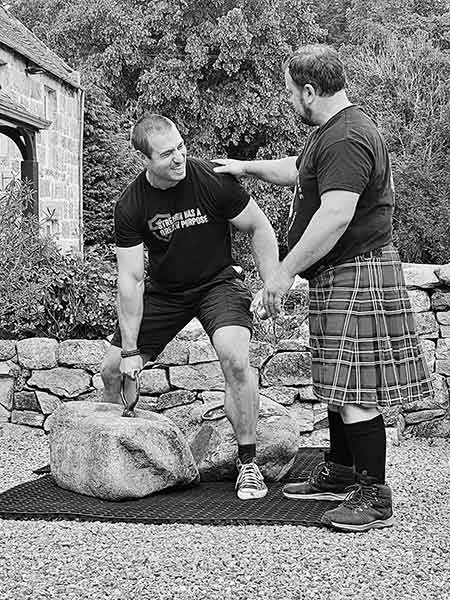
Train to Win
“We don’t rise to the level of our expectations; we fall to the level of our training.”—Archilochus, Greek poet and soldier, c. 680-645 BC
To achieve a great feat of strength (or any worthwhile goal), training must surpass the mere development of physical qualities. When we encounter a challenge that truly tests our abilities, it’s not only our physical capabilities that decide whether we will succeed or not. Ultimately, our success is based on our ability to remain steadfast and control our responses even when faced with the unexpected. In the process of becoming stronger physically, we find confidence and security in our abilities which allow us to keep our conviction in the face of uncertainty.
Your mental strength and fortitude will not only make the difference during the sticking point of a PR attempt in the deadlift or in the crucial last minute of the snatch test, but it prevents you from getting defeated internally before the external battle even begins.
At my SFG I Certification in 2016 in Budapest, a few minutes before we were about to start the snatch test, StrongFirst Certified Master Instructor Peter Lakatos asked every student if they had a strategy. As he approached me, (to my big surprise) I confidently answered “Yes.” Months of preparation gave me a deep-rooted confidence that I wasn’t even aware of until that moment. I realized for the first time during the weekend that, without the slightest doubt in my mind, I was going to pass the snatch test.
To achieve this state, one needs to be able “to endure that which is unpleasant in the process of getting what one really wants to get, or to be.”5 You must do what needs to be done and “learn to like it.”6 Training can and will reach a point where it becomes monotonous. The more specialized the goal, the narrower the path to get there. “People who learn to control inner experience will be able to determine the quality of their lives,“ states Mihaly Csíkszentmihályi, professor of psychology and author of Flow: The Psychology of Optimal Experience.7 He emphasizes the importance of having “the ability to create flow experiences even in the most barren environment.” Refuse to see your training as entertainment. Realize that it’s the necessary thing to do and immerse yourself in the task, knowing that in the end it will determine the outcome of your efforts and allow you to face your challenge with head held high.
After almost two years of training and with the culmination of hundreds of training sessions, I confidently walked up to the Dinnie Stones, knowing that I would succeed in “putting the wind beneath the stones.”
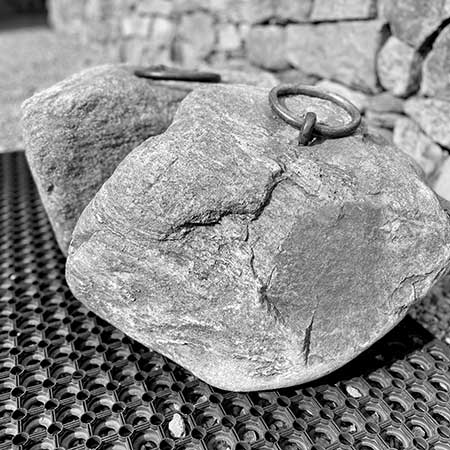
The Will to Strength
“No matter how much preparation we do, in the real tests of our lives, we’ll be in unfamiliar terrain.”—Josh Waitzkin, The Art of Learning
As I prepared to lift the stones, I rehearsed a process from training that I had done over and over again. I got myself into position, took a breath, braced, and started pushing my legs into the ground with all my strength. But something unexpected happened. Instead of the stones leaving the ground as I envisioned, my feet sunk deeper. The mats were softer than I expected. I was thrown off balance—literally and figuratively. Even though I was able to lift the stones off the ground with my first attempt, I wasn’t able to come to the lockout because my stance was not stable enough. My confidence, just ever so slightly, began to falter.
A true challenge will always be different than how you imagine it. No matter how thorough your preparation is, there will be an element you cannot control which holds the possibility of things not going your way. Although I tried to replicate the actual event more and more as my trip to Scotland approached, I realize the small detail of an unstable surface could be the small detail that prevented me from attaining the victorious outcome I’d imagined. For a moment, I contemplated the scenario of leaving Scotland defeated and what that would mean to me.
It’s moments like this that test our convictions. It would have been easier to surrender and say “I tried” than to carry on. It takes all your inner strength and integrity not to be conquered by doubt and abandon your beliefs. Nietzsche stated that a person becomes stronger by making a decision and firmly holding on once it is made. We discover “our own spirit” by facing something that truly tests our mettle.
“One must need to be strong—otherwise one will never become strong.”—Friedrich Nietzsche
I came to Scotland not to attempt to lift the Dinnie Stones but to lift them—a decision I made over a year ago and from which I would not be dissuaded. Knowing I would have to give my all on the second attempt, I realized I would not have enough energy for a third. I had no other choice but to complete the lift on my second attempt. But right there I knew I would not need a third attempt. I found my “will to strength” again.
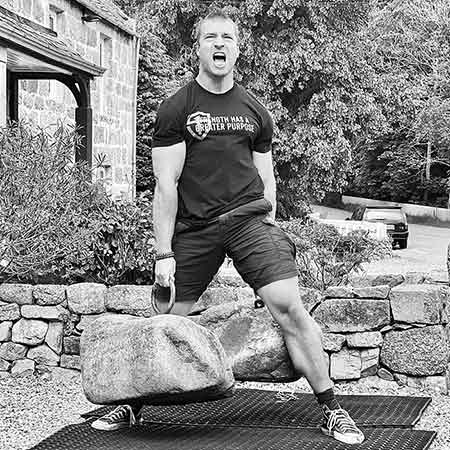
I Am Because We Are
I am still reflecting on what lifting the Dinnies Stones means to me personally, and although I’m not able to put everything into words yet, one thing is absolutely clear: what made the experience so special was having people to share it with. I am grateful to have amazing friends who supported me throughout the whole process and took it upon themselves to accompany me during my trip to Scotland.
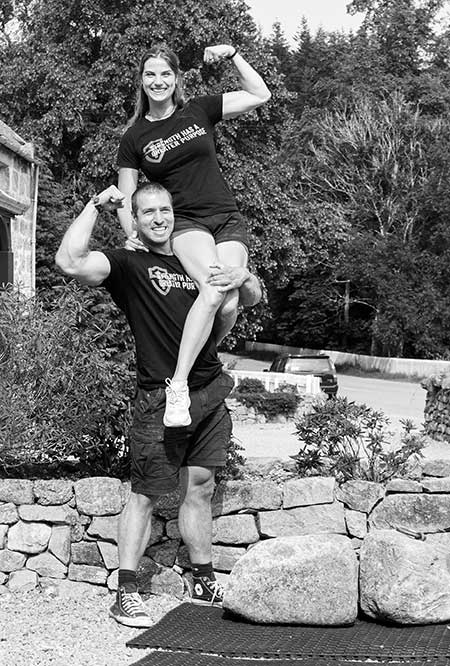
A special thanks to:
Jason Marshall, without whose guidance I never would have achieved this goal.
My girlfriend for her support and unending encouragement.
Mike Kästner for capturing these special moments perfectly with his pictures.
Claire Booth and Tony McGonnel for taking the time to come to Scotland for this event.
I hope by writing these words to pass on the passion and the will to strength to you—whoever may be reading this. Encouraging you to take on your own challenges and add to this great history of strength.
“It’s the myth and the history around people like Donald Dinnie and the stones. …They are just rocks to anybody else walking past, but if you know … the history, if you know the stories, that´s what makes it awesome.”—James Gardner in STONELAND
Please enjoy this conversation between StrongFirst Certified Master Instructor Jason Marshall and
StrongFirst Certified Instructor John Odden discussing their Dinnie Stones lifting experience.
Stay tuned for “Putting the Wind Beneath the Stones, Part II”
References
1Martin Jancsics and Dr. Bill Crawford, Stonelifting: An Ancient Test of Strength Revived, (Independently Published, 2018)
2Pavel Tsatsouline, “The Long View” (2014)
3Pavel Tsatsouline, “The Origins of StrongFirst Programming: The Soviet System” (2014)
4Mark Toomey, “What Great Purpose Will Your Strength Serve?” (2013)
5Mark Reifkind, “If You Want to be Strong, You Must be Tough” (2012)
6Pavel Tsatsouline, “The Will to Happiness” (2016)
7Mihaly Csikszentmihalyi, Flow: The Psychology of Optimal Experience, (Harper Perennial Modern Classics, 2008)


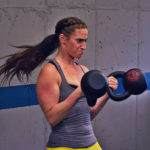
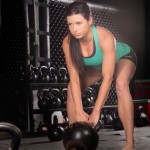
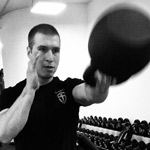

Great work Sven! Excellent and inspiring article! Hat’s off!
Sven, what an impressive achievement! Congratulations, brother!
Thank you Pavel! =)
Outstanding, congratulations!
Great read!
Thank you for your kind words!
Congratulations! Well done.
Every time that I see this strength challenge, I wonder if anyone ever calculated the amount of pressure concentrated into that seemingly thin handle? Unlike a kettlebell, it looks very narrow, so that enormous weight will be focused on a tiny area of the grip. Not that it would be easy with a more comfortable hand-hold, but that little loop of metal looks painful.
Thank you Albert!
It’s not very comfortable, let’s put it that way. Towards the end of my training, the condition of my skin was more of a challenge than the grip or strength in general.
That being said, my training handles were even more uncomfortable than the actual handles of the Stone, which ultimately turned be an advantage because neither grip nor skin sensitivity turned out to be an issue at the end.
Great article and quotes too.
Good job Sven!
Thank you very much my friend!
Wonderful wonderful wonderful article!!! Looking forward to part 2. Congratulations to you.
Thank you so much Megan! I am very happy that you enjoyed it!
That’s very nice, but a crumb of information about how you actually trained would be interesting.
That’s why it’s Part 1.
Stay tuned for “Putting the Wind Beneath the Stones, Part II”
😉
Footnote to the article: They have a combined weight of 332.49 kg (733 lb 0 oz; 52+1⁄2 st), with the larger stone weighing 188.02 kg (414 lb 8 oz; 29+1⁄2 st) and the smaller stone weighing 144.47 kg (318 lb 8 oz; 23 st).
Correct. You’ll also find more information about the stones, their location etc. through the first link in the article:
https://liftingstones.org/articles/dinnie_stones